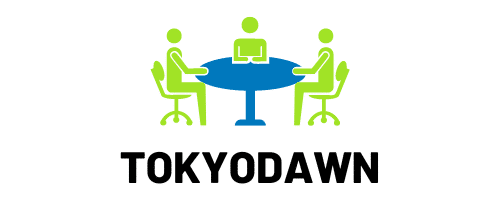In a world where technology continuously shapes and transforms our lives, one might wonder: can it help us achieve universal access to clean water? This isn’t just about having water to drink, it’s about access to clean, safe drinking water, and sanitation. It’s about sustainable water management, the development of energy-efficient water systems, and the use of data to ensure we’re on track to reach the Sustainable Development Goals (SDGs) related to water. This article examines how modern technologies are making strides in this crucial area.
Harnessing Technology for Clean Water Access
As we delve into the subject, let’s start by understanding how technology is playing a critical role in enabling access to clean water. Water is a basic human need, yet, many communities, particularly in developing countries, struggle to access this vital resource. This is where technology steps in, offering innovative solutions that are both sustainable and effective.
En parallèle : How Is AI Being Used to Streamline Supply Chain in Manufacturing?
For instance, Water-ATMs are becoming a popular solution in rural areas. These solar-powered machines dispense clean drinking water 24/7, operating much like regular ATMs, but with water instead of cash. With just a swipe of a prepaid card, people can fill their containers with clean, safe water. It’s a simple yet revolutionary use of technology that’s transforming lives in water-stressed communities.
Clean Water and Sanitation Management Systems
When it comes to water and sanitation management systems, technology is at the forefront, providing efficient and sustainable solutions. Many technologies exist that can purify water, making it safe for consumption, but they often require significant energy, making them unsustainable for long-term use.
Dans le meme genre : What Is the Impact of AI on the Evolution of Graphic Design Practices?
However, the advent of nanotechnology is changing this. Nanotechnology can remove pollutants from water in a cost-effective and energy-efficient manner. Nanoparticles can attract and capture contaminants, effectively filtering the water. This technology is not just for big treatment plants; it can also be used in small, portable units, making it a viable solution for remote communities that lack access to centralized water treatment facilities.
The Role of Data in Water Supply Development
Data is the lifeblood of modern society, and it’s shaping the development of water supply systems. Real-time data can provide valuable insights into water usage patterns, leak detection, and system performance, enabling efficient management of water resources.
One notable example is machine learning algorithms used in predicting water demand. These algorithms analyze large datasets to predict water usage patterns, enabling utilities to optimize their supply and distribution. Additionally, smart meters provide real-time data on water consumption, helping to identify leaks and wastage.
Energy-efficient Water Technologies
Energy and water are intrinsically linked. The water sector is a considerable energy consumer, with significant amounts of energy required to pump, treat, and distribute water. As such, there’s a growing focus on developing energy-efficient technologies that can reduce the energy footprint of the water sector.
Take, for example, the GravityLight. This ingenious device uses gravity to generate electricity. It’s particularly useful in remote areas without access to electricity, serving as a power source for water purification systems. By utilizing the natural force of gravity, it provides a sustainable, renewable energy source, demonstrating how technology can support both water and energy needs.
Fostering Healthier Communities through Safe Water Technologies
Finally, let’s reflect on how safe water technologies are fostering healthier communities. Waterborne diseases are a significant health concern, particularly in developing countries. However, innovative technologies are paving the way for safer water, thereby reducing the risk of such illnesses.
UV-LED technology, for instance, is a promising solution that can kill harmful microorganisms in water. Unlike traditional UV lamps, UV-LEDs are compact, energy-efficient, and have a long lifespan. They can be used in portable water purifiers, making them a viable solution for households, schools, and healthcare facilities in communities that lack access to treated water.
In the quest for universal access to clean water, technology stands as a beacon of hope. From solar-powered Water-ATMs and nanoparticle filters to smart meters and gravity-powered lights, innovation is making clean, safe water a reality for more people every day. While there’s still much work to be done to achieve the SDGs, the role of technology in this endeavor is undeniable and exciting.
The Intersection of Technology and Policy for Clean Water Access
Delivering universal access to clean water not only requires technological innovation but also effective implementation of policies and strategies. Technology augments the policies in place, improving the efficiency and effectiveness of water management systems.
Integrated Water Resources Management (IWRM) is one such approach that has gained considerable attention worldwide. It is a process that promotes the coordinated development and management of water, land and related resources. The purpose is to maximize societal and economic welfare without compromising the sustainability of vital ecosystems. Technological advancements play a pivotal role in making this concept a reality. For instance, Geographic Information System (GIS) technology can help map and manage water resources, aiding in effective decision-making.
Remote sensing technology, on the other hand, can aid in monitoring water quality and identifying potential sources of contamination, enabling proactive measures to prevent waterborne diseases. These technologies can be particularly beneficial in developing countries where the lack of access to clean water is often compounded by a lack of data and monitoring mechanisms.
Furthermore, technologies like blockchain can play a pivotal role in water management. The transparency, security, and decentralized nature of blockchain technology make it an ideal solution for managing water transactions, tracking water use, and enforcing water rights and agreements, fostering trust and cooperation among communities and stakeholders.
Technology and policy, therefore, work synergistically to address water scarcity, improve water quality, and ultimately, achieve the United Nations’ Sustainable Development Goals related to water.
Advancements in Water Treatment Technologies: A Ray of Hope
Protection and improvement of water quality are central to ensuring universal access to clean, safe drinking water. Emerging technologies in water treatment paint a promising picture on this front.
One such technology is electrocoagulation, a water treatment method that uses electricity to remove contaminants from water. This technique is effective in removing heavy metals, bacteria, viruses, and other pollutants, making the water safe for consumption. It’s energy-efficient, low-cost, and easy to operate, making it particularly suitable for low-resource settings.
Bioremediation is another innovative solution that uses living organisms, such as bacteria, fungi, and plants, to naturally detoxify contaminated water. This environmentally friendly method not only purifies water but also helps restore natural ecosystems and biodiversity.
Advancements in membrane technology also hold immense promise. Membrane technologies like reverse osmosis, nanofiltration, and ultrafiltration have proven highly effective in removing contaminants from water, including harmful microorganisms, chemicals, and salts. Moreover, as these technologies become more energy-efficient and affordable, they are increasingly being adopted in both developed and developing countries, bringing us closer to the goal of universal access to safe drinking water.
While these are hopeful developments, it’s important to remember that over two billion people worldwide still lack access to safe water. We must continue to innovate, adapt, and implement effective water management strategies to overcome this pressing global issue.
Conclusion
In conclusion, there is no doubt that technology is playing an instrumental role in addressing the global challenge of water scarcity and quality. Whether it be solar-powered Water-ATMs, nanotechnology for water purification, data-driven water supply management, energy-efficient technologies, or advanced water treatment methods, each is contributing to the vision of universal access to clean water.
However, technology alone cannot solve the water crisis. It needs to be coupled with effective policies, community participation, and international cooperation. While we celebrate the technological advancements and their potential, we must also remember the human aspect of the water crisis. It’s not just about getting water from the source to the tap, but also about ensuring equitable access, affordability, and sustainability.
As we move forward, let’s continue to leverage technology not just as a solution but as a tool for empowerment, enabling communities to manage their water resources efficiently and sustainably. With persistent efforts, achieving the Sustainable Development Goals related to water is not a far-fetched dream, but a tangible reality within our reach.











